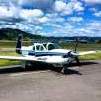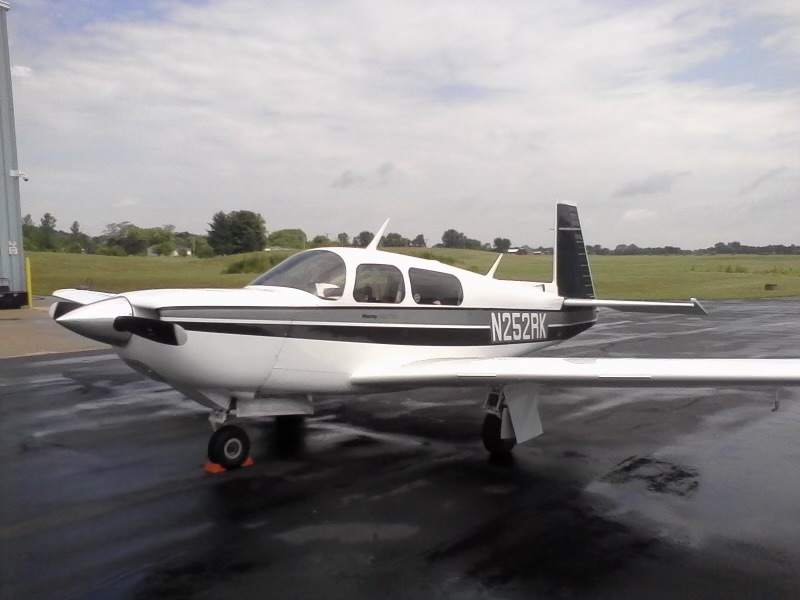-
Posts
5,846 -
Joined
-
Last visited
-
Days Won
29
Content Type
Profiles
Forums
Blogs
Gallery
Downloads
Media Demo
Events
Everything posted by Ragsf15e
-
No problem. However, my voltage declined again about a year later and I had to start again. This time I got help from a EE friend. We checked voltage at the alternator with the engine running, 14.0. Ok, VR is good, alternator is good. Checked voltage at the alternator noise filter connections, still 14.0. Checked the voltage before and after the alternator circuit breaker (70amp), 14.0. Finally checked voltage at the jumper between the “power bus” and main bus. 13.5. Took apart the connection, cleaned it with sandpaper (it had surface corrosion), and 14.0 everywhere again! I highly recommend checking alternator output with engine running. Just do it carefully with alligator clips from a distance.
-
As @201Mooniacsaid, early and light in the summer. You’ll be fine. I plan all my summer flying to finish by noon anyway due to buildups and bumps. You can still go a long way between 6am and noon in a J!
-
My mindset is that anything that works for 50 years on my airplane is worth rebuilding for another 50. Im not trying to be a smartass though, there’s plenty of stuff to upgrade and/or make better... Voltage reg, generator-alternator, etc.
-
I know but I couldn’t resist bragging about my old F! It’s crazy how things moved around between models and even serial numbers.
-
Ha! Mine was even easier! It was screwed into the firewall in the engine compartment in front of the copilot. Few screws, cannon plug, all done! Too bad that didn’t fix it.
-
As doc said, for oil under a cylinder, look on top of it. The airflow blows it down through the cooling fins.
-
I got some guidance here on MS that I sort of followed but not really. Wish I had though. Don’t throw parts at it until you’re sure what’s wrong. I got a new alternator and new vr and new field and alternator wiring at the advice of two mechanics. I paid for it all. None of that fixed it. Eventually I found the corrosion and fixed it with sandpaper. Have you checked output at the alternator with the engine running to see if it’s steady there?
-
Also, someone else said it before, but you gotta check your bus voltage to make sure it’s not an indication issue. After doing this once, I’d start at the alternator output. If that’s steady and 14 (or 28) vdc, then go to through and check each connection of alternator output up to the bus. If the alt output is bad (shaky or low voltage) look at alternator or vr. Potentially the vr input as @EricJ mentioned.
-
I had the same cannon plug into mine. Disconnect it, turn on master, use dvm to check voltage on red wire (double check this with the zef guide). They are labeled with very tiny letters on the cannon plug. Should be your power into the vr. It should match bus voltage. If you have bus voltage into the vr and the proper field voltage at the alternator, the vr isn’t the problem. It could still be the field cb. Mine is labeled field cb also, but it is power to the vr. If power into the vr is low or fluctuating due to an old cb, that will do it.
-

JPI 700 K-factor calibration question
Ragsf15e replied to Stryk77's topic in Avionics/Panel Discussion
I just computed mine and adjusted it in my jpi930. Started with 29.88. New setting is 30.45. Very close to what you came up with. -
My electrical issue was slightly different, but these tidbits might help a lot... 1. There is a good troubleshooting guide on both the Zeftronics website and the plane power website. Both those companies make VRs, so the troubleshooting guides work best for IDing problems with the VR or Alternator. 2. 10.5ish is normal at the alternator field wire connection. You should check power into the VR and it should match your bus voltage. Power out of your VR (field wire) will be 10.5ish. It should be the same at the VR and at the alternator end. Ie no drop through the field wire. 3. My issue was only resolved when I started the engine with chocks in and had my wife stay on the brakes. Then I very carefully checked voltage at the alternator and then each connector all the way to the bus. Eventually I found a dropping point about .6v. I cleaned those contacts and all is well. *that silver box in your engine compartment with alternator wire into it is a noise filter.
-

Garmin dual attitude indicator failures with data
Ragsf15e replied to RobertGary1's topic in General Mooney Talk
Even with their issues, I definitely like my G5s over a vacuum adi plus T&B. I feel like they have much less chance of failure and will “red x” if they do, so at least I know. As it is, I could technically fly partial panel without the G5s because I had to keep all the other stuff, but I doubt that would be fun. Also, the T&B doesn’t have battery backup, so it might be toast with the G5s depending on why they failed. Where I agree with you, it would be nice to have a backup with different technology/software/aiding requirements. Vacuum AI would be ok, but I think an RCA adi (which doesn’t require aiding as PT20j has explained) would be fine. If My stec30 wouldn’t be part of the T&B, I’d probably put in the “3rd” adi. So 2xG5s and 1 rca. Probably still much lighter than vacuum ai. -
I asked JPI support to look at the video as well... this is what I got: ”Make sure ignition harness shielding and p-leads are terminated correctly. EDM harness no tied up with any high noise wiring.” So the harness hasn’t moved in 9 years. Is he talking about the magneto P leads? If those aren’t shielded right can they mess up stuff not near them?
-
Also I’ve read on here to exercise the “breakout” by commanding a left turn and then manually forcing a right turn (and vice versa). On the ground, and iaw the before takeoff checks in the checklist addition included in the documentation.
-
Order lots of screws from AC Spruce. Get these, backups, and definitely some for bottom panels. Anytime one isn’t perfect, replace it.
-
Yeah it used to be stable without snubbers. Something has changed. Other than the manifold pressure, I don’t think this is a snubber issue. I think it’s electrical. Unfortunately, I have no idea how to hunt it down.
-
I noticed my oil pressure fluctuating a while ago. Now my fuel pressure decided to follow suit. MP has always jumped, it needs a snubber. JPI says to look at the wire routing and make sure it’s not with noisy wires... however that hasn’t changed since this started. Anyone else have ideas? Video below: https://photos.app.goo.gl/anNav39fGesFmdyaA
-
I called Dmax and talked to him when I had my gear acting up. He told me they have the switches available and change a few out each year. Not sure where they get them...
-

If I have two AHRS can I get rid of my vacuum system?
Ragsf15e replied to RobertGary1's topic in General Mooney Talk
My GTX345 ahrs works reasonably well with my ipad. The iPad is very old though and either the iPad or BT link makes it a bit choppy and not fun to fly off of. I use to consider it a backup for my vacuum adi, but now, anything that takes out my G5s is gonna kill the GTX345 too, so it’s useless. Yetti’s Stratus with iPad is good, or dynon pocket panel. -

If I have two AHRS can I get rid of my vacuum system?
Ragsf15e replied to RobertGary1's topic in General Mooney Talk
Yeah it’s awesome that many new devices have backup attitude info like that. FLight Stream, GTX345, etc. unfortunately, it turns out they may all be reliant on the same power as the G5s or GI275s. -
Yes, just to be clear, you will still need a -275 or G5 as a backup. G3x doesn’t have battery backup, so it would only serve as eis/mfd in that case.
-

If I have two AHRS can I get rid of my vacuum system?
Ragsf15e replied to RobertGary1's topic in General Mooney Talk
I guess I was think about the required aiding for their attitude source - internal gps, panel gps, pitot, no aiding? I.e. do they require gps or pitot input like G5s? -

If I have two AHRS can I get rid of my vacuum system?
Ragsf15e replied to RobertGary1's topic in General Mooney Talk
Any idea what requirements their ahrs has for aiding? -
I have a 930 in my panel and it has worked well. Personally, I’d prefer a Garmin eis, but not so much I’m going to change. The jpi is fine, but their customer service is marginal and there are lots of little idiosyncrasies with their products that affect some of us. I’ve spent a lit of time troubleshooting wobbly oil pressure, manifold pressure, etc. They just refer you to an engineering company website and tell you to buy a snubber. I want to believe Garmin has more time and money to sort out the little stuff. It would give me pause to have everything on one screen, but then if you have 2, there are twice as many chances for one of them to go. Any chance you’d do a g3x 7” as a dedicated eis/mfd?
-
I don’t think it brings anything at this point. I think he just wanted to know if a small intake leak like that can be seen. I don’t see it.



